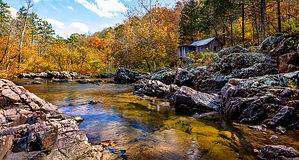It’s not possible to discover the exact tree that is the oldest olive tree in the world. Olive trees are hard to date because the center of the tree disappears as it ages which makes counting rings impossible. This leaves dates up for debate and the known dates are still influenced by folk stories.
To this day, olive trees are the dominant tree-grown crop in the Mediterranean. Spain is currently the largest exporter of olive oil in the world. Olive oil has been in the past and continues to be a staple of Mediterranean life.
Olive oil production occurred in Crete before the Late Bronze Age. This means that there are ancient olive trees that existed thousands of years ago. Are they still alive?
We’ll discover the oldest olive trees in the world that are still alive today.
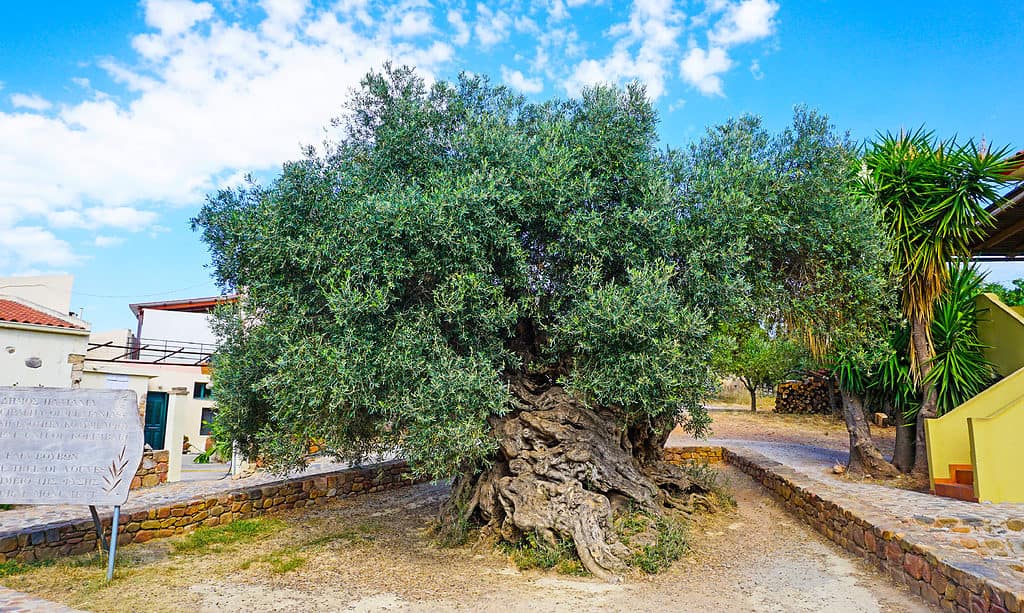
The oldest three-thousand-year-old olive tree in the village of Ano Vouves on the
island
of Crete.
©iStock.com/tm_zml
Oldest Olive Trees in the World
These are some of the oldest olive trees on the planet:
- Noah’s Sisters
- Al Badawi Tree
- Vouves Tree
- Olivastro di Luras
- Oliveira do Mouchão
- Azorias Tree
- Stara Maslina
2,000 Years Old: Stara Maslina
The Stara Maslina is over two thousand years old and it’s located in Montenegro. Despite one side of the tree sustaining burns, it still produces fruit.
A local story claims that at one time men playing cards under Stara Maslina threw a lit match at the tree which caused a big fire. It’s more likely that the tree received a hit by lightning.
Olive trees are known for their resilience against fire and have historically been planted as a fire break. They retain a lot of moisture because they acclimate to dry and hot climates which also makes them harder to burn. Recently, however, olive trees have been easier to ignite due to drought conditions.
The branches of an olive tree fan out far from the trunk so any spreading fire isn’t as likely to affect the trunk. They also have leathery leaves that don’t catch on fire very well.
3,000 Years Old: Azorias Tree
The Azorias Tree on the island of Crete in Greece is over three thousand years old. It dates back to the time when the Minoans were alive.
Wreaths made from this tree’s branches were used in the 2004 Athens Olympic Games. Olive branches have been used as a form of symbolism since ancient times.
These olive branches gifts are symbols of friendship and peace which starts with the Greek goddess Eirene. She was a goddess of peace with olive branches and the bounty they bring.
Like most ancient olive trees, it’s large. It’s almost twenty-three feet tall and the crown is around thirty-six feet wide. This is one of Greece’s UNESCO World Heritage Sites and it earned this distinction in 1995.

The Stara Maslina is over two thousand years old and it’s located in Montenegro.
©5,184 × 3,456 pixels, file size: 11.04 MB, MIME type: image/jpeg – License
3,350 Years Old: Oliveira do Mouchão
The Oliveira do Mouchão is about three thousand three hundred and fifty years old and it’s location is in Abrantes, Portugal in the village of Mouriscas. It still creates a crop of small black olives.
It was planted during the Atlantic Bronze Age. A close cultural exchange between different areas of Europe, especially along coasts marks the end of this period in European history. Cliff castles are an architectural style from this period that spread because of trade.
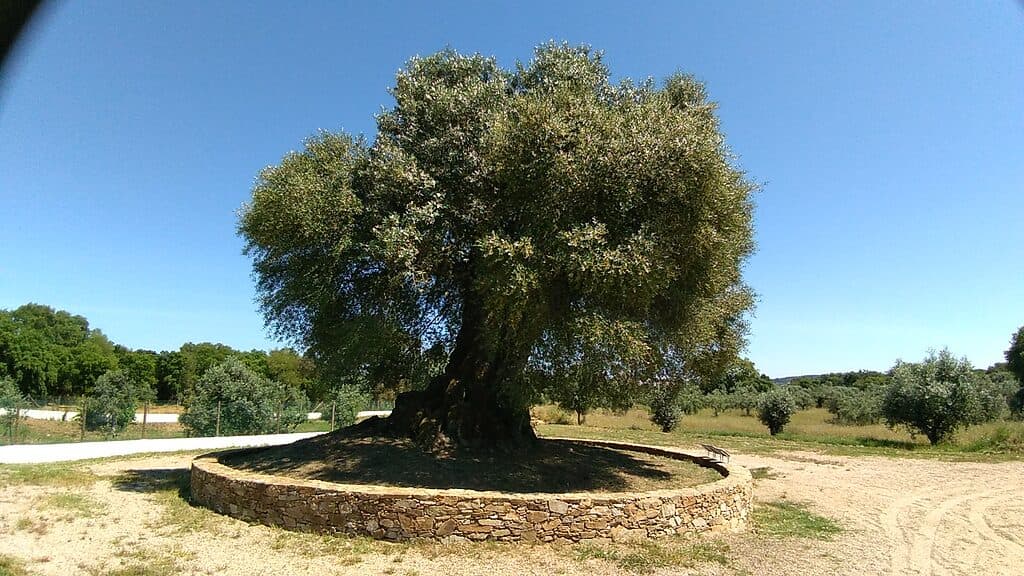
The Oliveira do Mouchão is about three thousand three hundred and fifty years old and it’s located in Abrantes, Portugal in the village of Mouriscas.
©1,920 × 1,080 pixels, file size: 617 KB, MIME type: image/jpeg – License
3,500 Years Old: Olivastro di Luras
The Olivastro di Luras is located in Sardinia, Italy. It is believed to be up to thirty-five hundred years old. Because of its age, it’s also known as the “Great Patriarch.”
It’s located in the Karana Locality near the Church of Santu Baltolu and Lake Liscia. It’s around forty-six feet tall. There are two other old olive trees nearby with one being a couple of thousand years old and the other being around five hundred years of age.
There are affordable informational tours available about the trees and it costs three pounds to visit the Olivastro di Luras. It’s only open from April 1to November 2 and tours are available from 10:30 am to 7:00 pm.
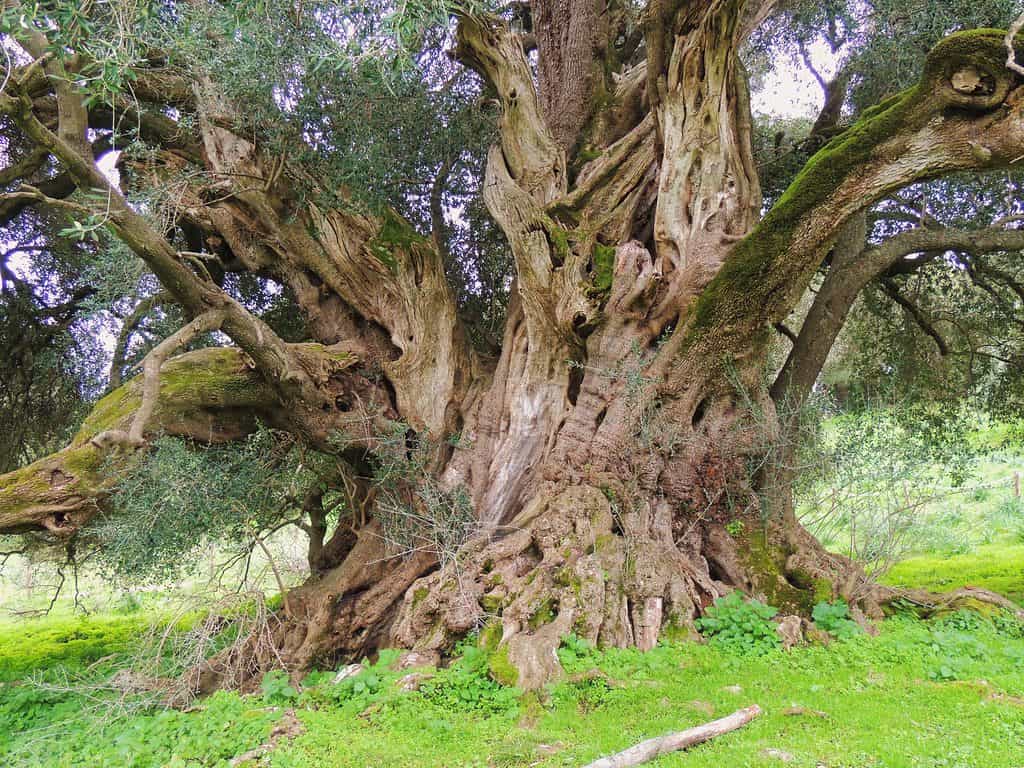
The Olivastro di Luras is located in Sardinia, Italy. It is believed to be up to thirty-five hundred years old. Because of its age, it’s also known as the “Great Patriarch.”
©4,608 × 3,456 pixels, file size: 4.48 MB, MIME type: image/jpeg – License
4,000 Years Old: Vouves Tree
The Vouves Tree is located on Crete in Greece and it’s over four thousand years old. When genetic testing took place, the determination is the tree has received grafting at least once since two samples have different DNA.
Greeks and Romans hold olive trees in reverence. To this day, clippings of the Vouves Tree are given ceremoniously in important situations.

The Vouves Tree is located on Crete in Greece and it’s over four thousand years old.
©Georgios Tsichlis /Shutterstock.com
5,000 Years Old: Al Badawi Tree
The Al Badawi Tree is in the village Al Walaja in Palestine. It is between four thousand and five thousand years old. There is proof that olive oil production has been in the region for eight thousand years.
It’s name is for an Egyptian Sufi, Sheik Ahmad al-Badawi, who spent a lot of time sitting under the tree. Ahmad al-Badawi was alive in the 1200s and is a saint to some Sunni Muslims. He’s one of the most popular Muslim saints in modern Egypt.
6,000 Years Old: Noah’s Sisters
The belief is Noah’s Sisters are about six thousand years old. A sign near the tree says the tree is from approximately 4,000 BCE.
There are sixteen trees in total that date to the same time. This grove is located in Bechealeh in Lebanon. These trees are important to the country of Lebanon and they appear on some of the country’s postage stamps.
Olives still grow on the Sisters Olive Trees of Noah. A non-profit sells products of the same name. This non-profit’s purpose is protecting these olive trees. It also sells olive oil produced by the tree’s crop which is made four hours after the olives are picked.
Local folklore claims that the olive branch that the dove brought to Noah’s Ark in the Old Testament of the Bible originated from these trees. There is some cultural and scientific evidence that a great flood may have taken place a few thousand years before recorded history. Since Noah’s Sisters are at an elevation of over four thousand two hundred feet, they would have been above water if a flood did take place.
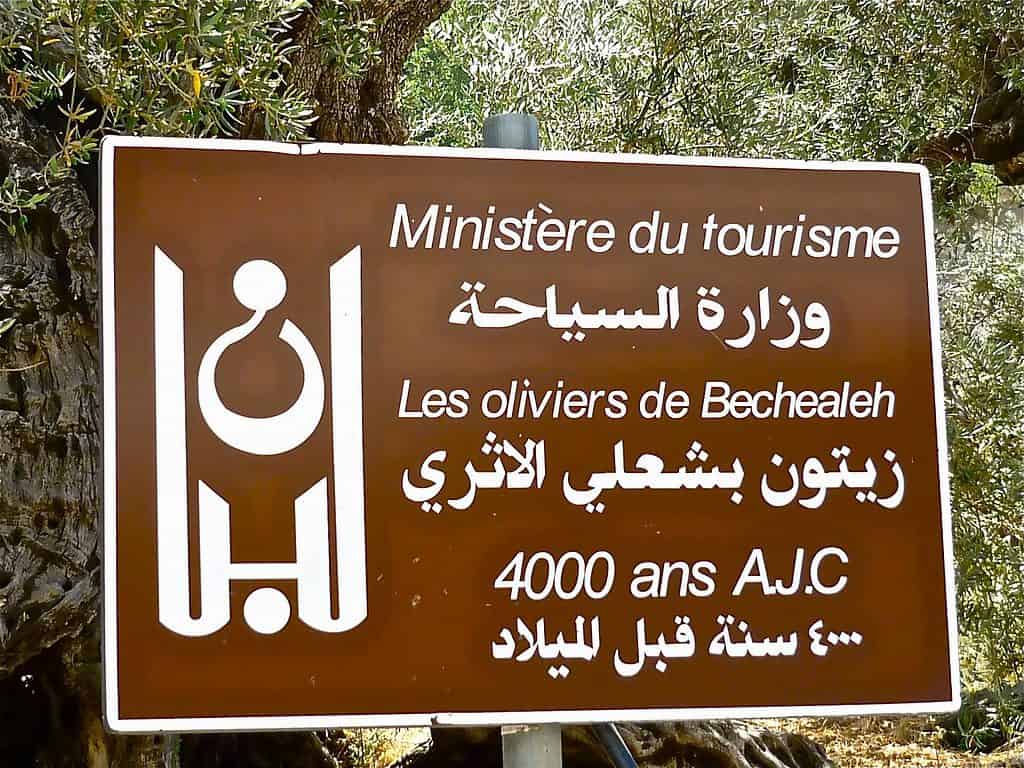
Sign given to the village by the Ministry of Tourism after the trees’ possible age was publicized in 1999.
©1,600 × 1,200 pixels, file size: 416 KB, MIME type: image/jpeg – License
Up Next
- Discover the Oldest Bonsai Tree and Where to See It
- The Oldest Living Thing on Earth Can Be Found in California
- Discover the Oldest Tree in the World
The photo featured at the top of this post is © iStock.com/Carter Wilson
FAQs (Frequently Asked Questions)
What is believed to be the oldest olive tree?
The belief is Noah’s Sisters are about six thousand years old. A sign near the tree says the tree is from approximately 4,000 BCE.
What are olive trees known for?
Olive trees are known for their resilience against fire and have historically been planted as a fire break. They retain a lot of moisture because they acclimate to dry and hot climates which also makes them harder to burn. Recently, however, olive trees have been easier to ignite due to drought conditions.
Thank you for reading! Have some feedback for us? Contact the AZ Animals editorial team.





